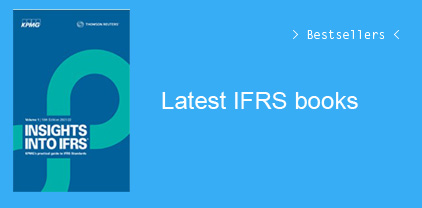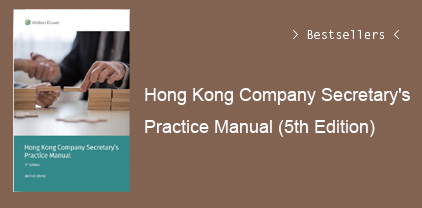Chapter 1 1-1
FASB Accounting Standards Updates — Broad Issues 1-1
FASB ASU No. 2016-15, Statement of Cash Flows (Topic 230): Classification of Certain Cash Receipts and Cash Payments (a consensus of the Emerging Issues Task Force) 1-2
FASB ASU No. 2016-16, Income Taxes (Topic 740): Intra- Entity Transfers of Assets Other than Inventory 1-5
FASB ASU No. 2016-18, Statement of Cash Flows (Topic 230): Restricted Cash (a consensus of the FASB Emerging Issues Task Force) 1-6
FASB ASU No. 2017-01, Clarifying the Definition of a Business (Topic 805) 1-8
FASB ASU No. 2017-04, Intangibles—Goodwill and Other (Topic 350): Simplifying the Test for Goodwill Impairment 1-10
FASB No. ASU 2017-05, Other Income–Gains and Losses from Derecognition of Nonfinancial Assets (Subtopic 610-20): Clarifying the Scope of Asset Derecognition Guidance and Accounting for Partial Sales of Nonfinancial Assets 1-12
FASB No. ASU 2017-07, Compensation–Retirement Benefits (Topic 715): Improving the Presentation of Net Period Pension Cost and Net Periodic Postretirement Benefit Cost 1-14
FASB ASU No. 2018-02, Income Statement—Reporting Comprehensive Income (Topic 220): Reclassification of Certain Tax Effects from Accumulated Comprehensive Income 1-16
FASB ASU No. 2018-13, Fair Value Measurement (Topic 820): Disclosure Framework–Changes to the Disclosure Requirements for Fair Value Measurement 1-18
FASB ASU No. 2018-17, Consolidation Topic 810: Targeted Improvements to Related Party Guidance for Variable Interest Entities–Decision-Making Fees 1-20
FASB ASU No 2019-03, Not-for-Profit Entities Topic 958: Updating the Definition of Collections 1-22
FASB ASU No. 2019-06: Extending the Private Company Accounting Alternatives on Goodwill and Certain Identifiable Intangible Assets to Non-for-Profit Entities 1-24
FASB ASU No 2019-12, Income Taxes Topic 740: Simplifying the Accounting for Income Taxes 1-26
Chapter 2 2-1
FASB Accounting Standards Updates — Narrow Issues 2-1
FASB ASU No. 2017-06, Plan Accounting: Defined Benefit Plans (Topic 960), Defined Contribution Plans (Topic 962), Health and Welfare Benefit Plans (Topic 965): Employee Benefit Plan Master Trust Reporting (a consensus of the Emerging Issues Task Force) 2-2
FASB ASU No. 2017-08, Receivables-Nonrefundable Fees and Other Costs (Subtopic 310-20): Premium Amortization on Purchased Callable Debt Securities 2-4
FASB ASU No. 2017-11, Earnings Per Share (Topic 260), Distinguishing Liabilities From Equity (Topic 480), Derivatives and Hedging (Topic 815): I. Accounting for Certain Financial Instruments with Down Round Features, II. Replacement of the Indefinite Deferral for Mandatorily Redeemable Financial Instruments of Certain Nonpublic Entities and Certain Mandatorily Redeemable Noncontrolling Interests with a Scope Exception 2-6
FASB ASU No. 2017-15, Codification Improvements to Topic 995, U.S. Steamship Entities: Elimination of Topic 995 2-9
FASB ASU No. 2018-12, Financial Services—Insurance (Topic 944): Targeted Improvements to the Accounting for Long-Duration Contracts 2-10
FASB ASU No. 2018-14, Compensation—Retirement Benefits—Defined Benefit Plans—General (Subtopic 715-20): Disclosure Framework—Changes to the Disclosure Requirements for Defined Benefit Plans 2-12
FASB ASU No. 2018-15, Intangibles—Goodwill and Other—Internal Use Software (Subtopic 350-40): Customer’s Accounting for Implementation Costs Incurred in a Cloud Computing Arrangement That is a Service Contract 2-14
FASB ASU No. 2019-02, Improvements to Accounting for Costs of Films and License Agreements for Program Materials 2-16
FASB ASU No 2019-08, Codification Improvements—Share-Based Consideration Payable to a Customer 2-18
Chapter 3 3-1
Revenue Recognition, Financial Instruments, and Leases 3-1
FASB ASU No. 2014-09, Revenue from Contracts with Customers (Topic 606) 3-2
FASB ASU No. 2016-13, Financial Instruments—Credit Losses (Topic 326): Measurement of Credit Losses on Financial Instruments 3-23
FASB ASU 2019-05, Financial Instruments—Credit Losses (Topic 326) Targeted Transition Relief 3-32
FASB ASU NO 2019-11, Codification Improvements to Topic 326, Financial Instruments-Credit Losses 3-33
FASB ASU No. 2017-12, Derivatives and Hedging (Topic 815): Targeted Improvements to Accounting for Hedging Activities 3-36
FASB ASU No. 2018-16, Derivatives and Hedging (Topic 815): Inclusion of the Secured Overnight Financing Rate (SOFR) Overnight Index Swap (OIS) Rate as a Benchmark Interest Rate for Hedge Accounting Purposes 3-39
FASB ASU No. 2016-02, Leases (Topic 842) 3-40
FASB ASU No. 2018-11, Lease Accounting, Targeted Improvements 3-52
FASB ASU No 2018-20, Leases (Topic 842) Narrow-Scope Improvements for Lessors 3-53
Chapter 4 4-1
Private Company Financial Reporting 4-1
Private Company Council 4-2
FASB ASU No. 2013-12, Definition of a Public Business Entity—An Addition to the Master Glossary 4-5
FASB ASU No. 2016-03, Intangibles—Goodwill and Other (Topic 350), Business Combinations (Topic 805), Consolidation (Topic 810), Derivatives and Hedging (Topic 815): Effective Date and Transition Guidance (a consensus of the Private Company Council) 4-7
FASB ASU No. 2014-02, Intangibles—Goodwill and Other (Topic 350): Accounting for Goodwill (a consensus of the Private Company Council) 4-9
FASB ASU No. 2014-03, Derivatives and Hedging (Topic 815): Accounting for Certain Receive-Variable, Pay-Fixed Interest Rate Swaps—Simplified Hedge Accounting Approach (a consensus of the Private Company Council) 4-12
FASB ASU No. 2014-07, Consolidation (Topic 810): Applying Variable Interest Entities Guidance to Common Control Leasing Arrangements (a consensus of the Private Company Council) 4-15
FASB ASU No. 2014-18, Business Combinations (Topic 805): Accounting for Identifiable Intangible Assets in a Business Combination (a consensus of the Private Company Council) 4-17
FASB ASU 2018-17, Consolidation Topic 810: Targeted Improvements to Related Party Guidance for Variable Interest Entities 4-19
Current PCC activities 4-21
International Financial Reporting Standard for Small and Medium-Sized Entities 4-22
Chapter 5 5-1
FASB Exposure Drafts and Projects 5-1
Framework projects 5-2
Recognition and measurement projects 5-5
Presentation and disclosure projects 5-8
Chapter 6 6-1
The Current Environment and Implications for Audit Planning 6-1
Understanding the entity and its environment 6-3
Current economic factors 6-8
Executive views of top risks for 2020 6-17
Enhancing risk assessment processes 6-20
Audit planning considerations 6-24
Summary 6-33
Chapter 7 7-1
New Statements on Auditing Standards 7-1
SAS No. 134: Auditor Reporting 7-2
SAS No. 135: Omnibus SAS-2019 7-20
SAS No. 136: Reporting on Employee Benefit Plan Financial Statements 7-24
SAS No. 137 — Auditor Responsibility for Other Information in Annual Reports 7-33
SAS No. 138 — Description of Materiality 7-38
Summary 7-40
Chapter 8 8-1
Other Standards-Setting Activities Affecting Audit and Attestation Engagements 8-1
Exposure drafts of proposed SASs 8-2
Recently issued auditing interpretation 8-18
Recently issued technical questions and answers (Q&As) 8-21
Recently issued attestation standards 8-25
Outstanding exposure draft of proposed revisions to SSAEs 8-30
Attest interpretations 8-33
ASB’s standards setting agenda 8-34
Summary 8-36
Chapter 9 9-1
PCAOB Update 9-1
About the PCAOB 9-2
Recently issued PCAOB auditing standards 9-4
Recently issued exposure drafts of proposed PCAOB auditing standard 9-24
Recently issued concept release 9-29
Other ongoing, audit-related projects of the PCAOB 9-30
Summary 9-32
Chapter 10 10-1
Preparation, Compilation, and Review Engagement Update 10-1
Reminder of SSARS-related engagements 10-2
SSARS No. 24 — Omnibus SSARS–2018 10-5
SSARS No. 25, Materiality in a Review of Financial Statements and Adverse Conclusions 10-16
Common practice issues 10-24
Case study 10-29
Summary 10-30
Chapter 11 11-1
Other Recently Issued Guidance 11-1
Overview of COSO 11-2
AICPA audit quality initiative 11-14
CAQ audit quality framework 11-19
Staying abreast of emerging technologies 11-21
Summary of changes to the AICPA Code of Professional Conduct 11-23
Summary of exposure drafts of proposed changes to the AICPA Code of Professional Conduct 11-31
Summary 11-40
Glossary Glossary 1
Index Index 1
Solutions Solutions 1
Chapter 1 Solutions 1
Chapter 2 Solutions 3
Chapter 3 Solutions 3
Chapter 4 Solutions 5
Chapter 6 Solutions 7
Chapter 7 Solutions 9
Chapter 8 Solutions 12
Chapter 9 Solutions 14
Chapter 10 Solutions 17
Chapter 11 Solutions 20
































